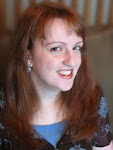Kurt Vonnegut's absurdist classic Slaughterhouse-Five introduces us to Billy Pilgrim, a man who becomes unstuck in time after he is abducted by aliens from the planet Tralfamadore. In a plot-scrambling display of virtuosity, we follow Pilgrim simultaneously through all phases of his life, concentrating on his (and Vonnegut's) shattering experience as an American prisoner of war who witnesses the firebombing of Dresden. (Amazon)
Review by Jessica Day George, Middle Grade and Young Adult Author, and Bookshop Talk Host
SLAUGHTERHOUSE-FIVE or THE CHILDREN’S CRUSADE is not only one of the greatest novels of the 20th century, it is possibly one of the greatest anti-war novels of all time. It’s also written in the style of the novels of the planet Trafalmadore, which at first seems like pure silliness.
But it isn’t.
On the distant planet of Trafalmadore, to which we are introduced during the course of the novel, they know that time is not linear. All that ever was, is, and will be is around us all the time. Their novels are a series of pictures, taken in at once, which gives the reader an overall view of a scene or event of great beauty. Vonnegut essentially achieves the same effect with his novel. Written in small episodes that cover the life of Billy Pilgrim, World War II veteran, optometrist, son, husband, father, and briefly an exhibit in a zoo on Trafalmadore, SLAUGHTERHOUSE-FIVE jumps forward and backward in time and place, but when you are done with it, your brain is left with an complete picture of the novel that will stay with you forever.
The first chapter is essentially an introduction, in which Vonnegut describes his own experiences after the war, and hints at things he saw during his service in Germany. It’s the first chapter, though, and not an introduction, because it is an integral part of the book and not something that should be skipped to save time. He talks about meeting with an old friend from the war, and the anger of the friend’s wife, who fears that his book will glorify war and steer society toward more wars, all of which are fought by children, in the end. Thus his promise to name his novel THE CHILDREN’S CRUSADE, and to not glorify war. And he doesn’t. Vonnegut witnessed the destruction of Dresden, which had been one of the most glorious cities in Europe. It had no tactical significance, and he never could discover why it was bombed, but when the dust settled the destruction was more widespread and the body count far higher than that of Hiroshima. A thing of great beauty was destroyed, and countless civilians: old men, women, and children were dead. (So it goes.)
Vonnegut could have told about this in a straight memoir. He could have presented it as fiction, but done so in a linear fashion, without Billy Pilgrim’s travels through space and time. But to do so would have lessened the impact, in my opinion, and would have given the world a completely bland novel about WWII. Instead what he’s done is taken all the heartbreak, all the pain and senselessness, and added just a dash of absurdity, which elevates this book to sheer art.
So. Why is this book banned quite so much? I really don’t know. Yes, there is a brief sex scene. Yes, there are a couple of swear words. Oh, and a line drawing of a pair of breasts, which aren’t important. What’s important is the necklace hanging above them, and the saying on it. But is that really a reason to take this book away from an entire school? An entire library? To say that no one in our town should read this book? No. To ban this book is to deny teens and adults the experience of reading not just a great work of literature, but to say that Vonnegut’s message, formed from his experience in the war, is worthless.
MARKET: 16+
LANGUAGE: 2-3 uses of the F-word. Scattered mild profanity.
SENSUALITY: a PG-13 sex scene, nudity (nonsexual), a description of a pornographic picture.
VIOLENCE: Bombings (it’s a war book), shootings, someone is beaten. None of it is graphic.
MATURE THEMES: War, mental illness, sexuality, one character is a former porn star (this is mostly hinted at).
Book formats:






















1 comment:
This book has been on my To Read list for YEARS! Thank you for this insightful review! I need to read SLAUGHTERHOUSE-FIVE, I know.
Post a Comment